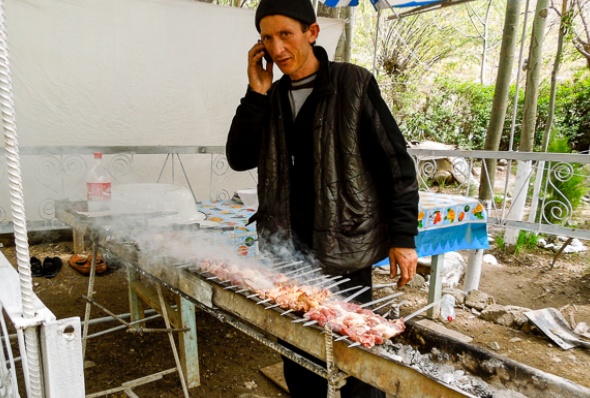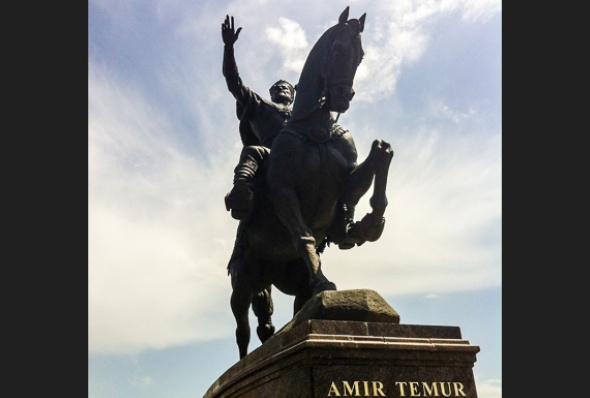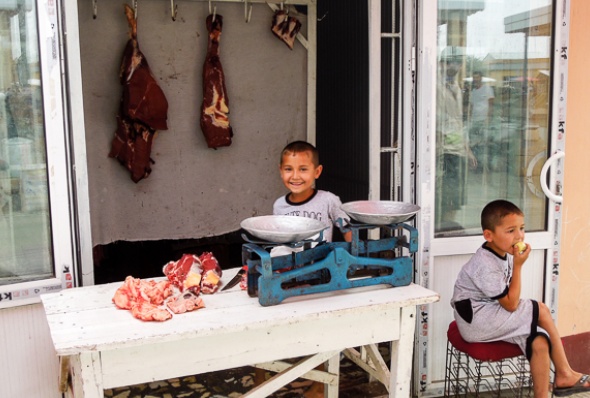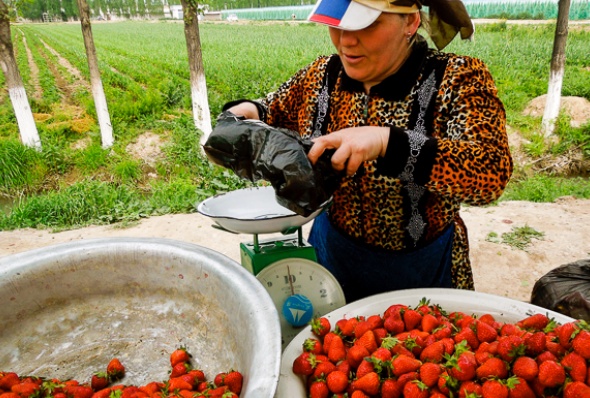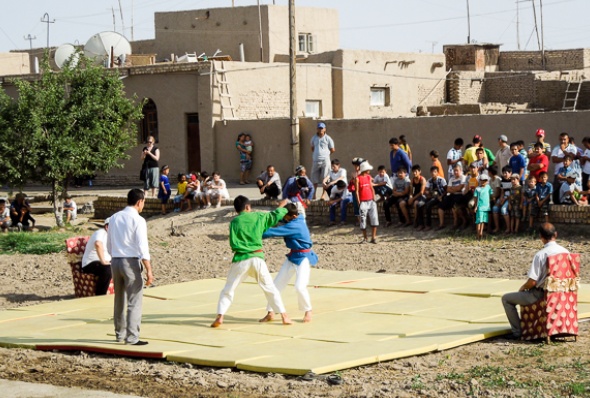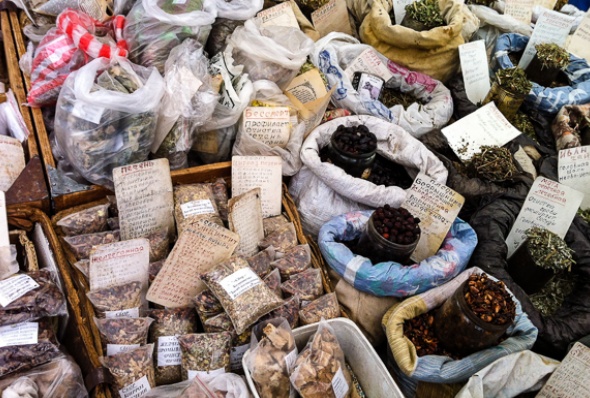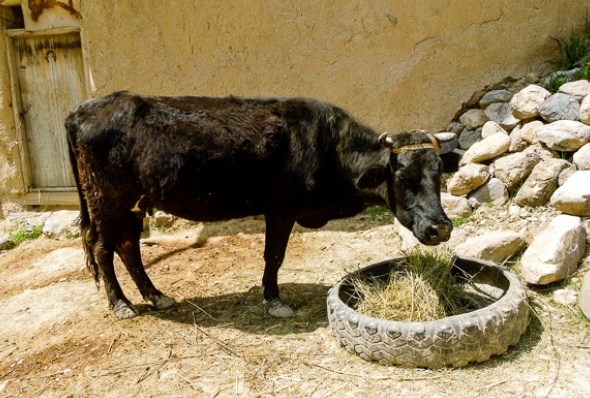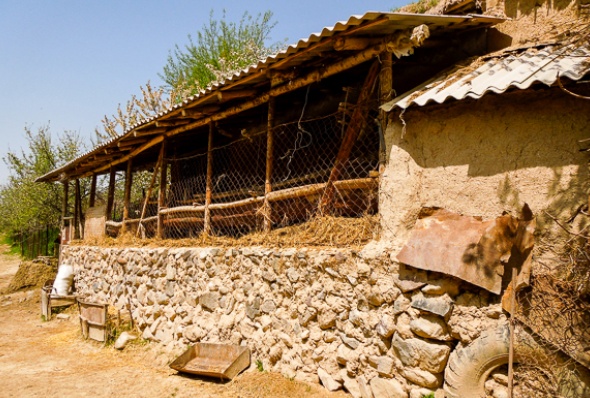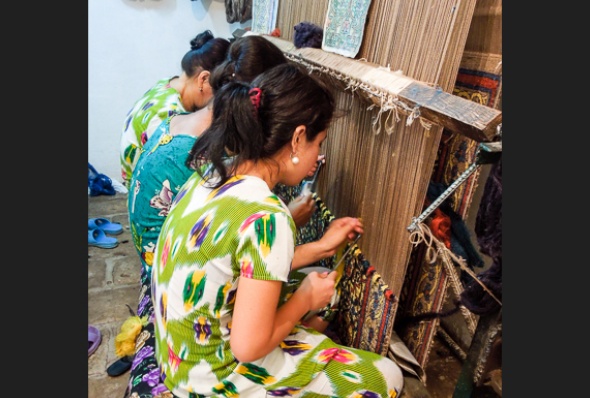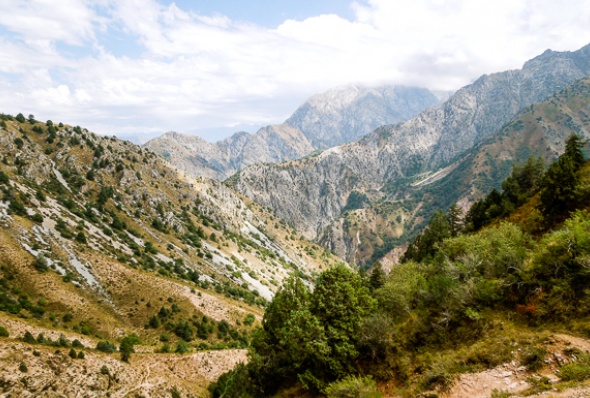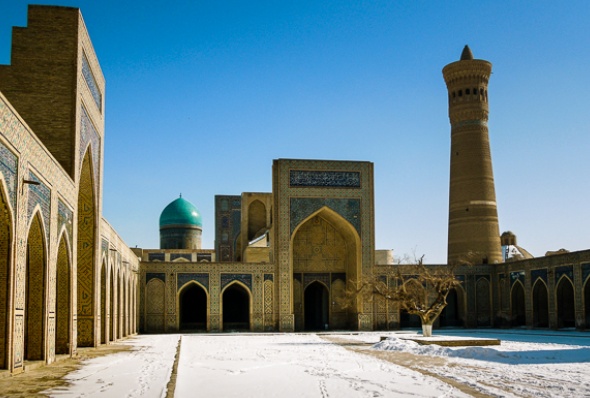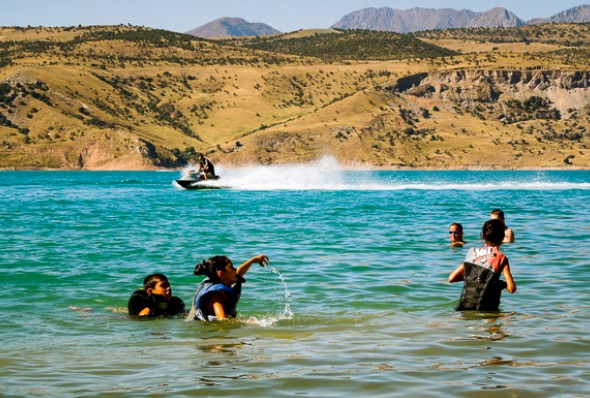By IWPR Central Asia
Photo: Helen Stevenson
Farmers in Uzbekistan are notionally private operators but remain beholden to the state, as they hold land on a long lease rather than in outright ownership.
This structure is a legacy from the Soviet era, as are the state-set quotas for cotton and wheat. Farmers have to sell these to monopoly trading enterprises at below-market prices.
However, the specialised farming machinery of the Soviet period has been largely replaced by manual work for planting, weeding, and picking, leaving this a labour-intensive industry.
Apart from farming, villagers engage in small-scale business ventures. These range from running food stalls at a local market, the small-scale production of honey or producing traditional Uzbek clothing such as chopans, the robes worn by men.
Local rates of entreupreneurship remain low, however, and taxes can be punishing for even the smallest producers.
The high disparity in living standards between the impoverished countryside and more affluent cities have meant a steady drift of rural residents to urban areas over the last 15 years or so.
This is an especially attractivee option for younger people; more than a quarter of all Uzbeks are under the age of 15, with the birthrate on the rise.
Deteriorating standards of education as well as widespread corruption restrict social mobility inside Uzbekistan, leaving opportunities for villagers limited in cities, too.
High unemployment and low wages also mean that at least two million Uzbeks seek temporary work abroad each year.
This article was produced under an IWPR project called Strengthening Capacities, Bridging Divides in Central Asia, funded by the Foreign Ministry of Norway.


